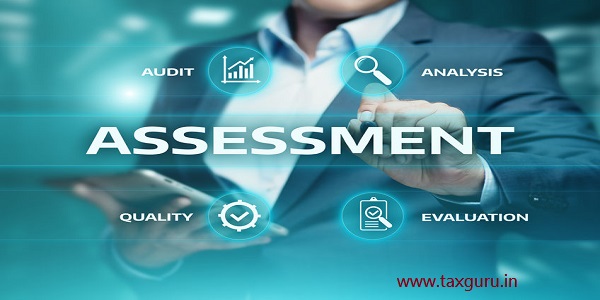As per the Income Tax Act 1961, an AOP/BOI is a Separate Assessee. When two or more than two persons or individuals join together to do some activity to produce income by their efforts in common without forming a Partnership firm or Private/Public Limited Company then we call it AOP/BOI.
An AOP/BOI can be of following types and shall be assessed in the following manner:
a. Co-operative Society —Assessed specifically as per slab rate
b. Society registered under the Societies Registration Act, 1860, or any other law corresponding to that act in force — It shall be taxable at such a slab rate as applies to an Individual.
c. Mutual Associations — Income from Members is exempt whereas income from Non-members is taxable.
d. Private Trust — Assessed as per Section 161 and 164(1)
e. Charitable Trust — Assessed as per section 11 to 13 and Section 164(2)
f. Oral Trust — It is taxable at Maximum Marginal rate as per Section 164A
g. Other AOP/BOI — Assessed As per Section 167B(1) & (2)
Here, this article follows the discussion on assessment of the Seventh Limb of AOP/BOI i.e. Other AOP/BOI means other than co-operative society registered under the Co-operative societies act, 1912, Society registered under societies registration act 1860, Mutual associations, Private trust registered under private trust act 1882, Charitable trust registered u/s 12A, 12AA & 12AB, and oral trust.
ASSESSMENT OF OTHER AOP/BOI—SECTION 167B
An AOP/BOI will be assessed in the following two manners:
√ Where the individual share of members are unknown or indeterminate;
√ Where the individual share of members is Known or determined.
CASE1: Where a share of members are unknown or indeterminate [Section 167B (1)]
In this case, Total Income of AOP/BOI will be Assessed at “Maximum Marginal Rate” means the rate of Income-tax including Surcharge and Education cess applicable to the highest slab of income in the case of an individual, association of persons, or body of individuals as specified in the finance act of the relevant year. For the Financial year, 2019-2020 MMR is 42.744 % (i.e. 30%+37% Surcharge+4% Education Cess).
If the total income of AOP/BOI comprises of Short capital gain u/s 111A, Long capital gain u/s 112A, and Tax on Income of Foreign institutional investors from securities u/s 115AD, these will be charged to tax at a rate specified under respective sections not at MMR because ‘MMR’ is for Normal tax rate not for the special rate of tax. Moreover, the enhanced surcharge of 25% & 37% as the case may be, is not levied, from the income chargeable to tax under sections 111A, 112A, and 115AD. Hence the Maximum rate of surcharge on tax payable on such incomes shall be 15%.
CASE2: Where a share of members are known or determinate [Section 167B (2)]
> Where one of the members has total income exceeding maximum exemption limit: Where the total income of any member of AOP/BOI, without including his income from AOP/BOI exceeds the Maximum Exemption limit, then such AOP/BOI will be charged to tax at the maximum rate of 42.744% for the Financial year 2019-20 as applicable on its total income exclusive of income taxable at a special rate.
> Where none of the members has total income exceeding the maximum exemption limit: In such case, AOP will pay Income tax on its total income at the slab rates which are the same as applicable to an individual and the benefit of basic exemption of Rs 250000 shall be available to such AOP/BOI.
TREATMENT OF SHARE OF INCOME IN THE HANDS OF A MEMBER OF AOP/BOI {SECTION 86}:
♦ If an AOP/BOI has paid tax at the maximum marginal rate, or a higher rate, the member’s share in the total income of the firm will not be included in his total income.
♦ If the AOP/BOI has paid tax at regular rates applicable to an individual, the member’s share in the income of the AOP/BOI computed u/s 67A shall form part of his total income. However, members will be allowed rebate u/s 110 at the average rate in respect of such share.
DETERMINATION OF TAX WHERE TOTAL INCOME INCLUDES INCOME ON WHICH NO TAX IS PAYABLE {SECTION 110}:
If the total income of an assessee includes any income on which no income tax is payable, the assessee would be entitled to a deduction, from the amount of income tax with which he is chargeable on his total income, of an amount equal to the income tax calculated at the average rate of income tax on the amount on which no income tax is payable.
Let’s understand it with the help of an example:
EXAMPLE: AB Associates is an AOP consisting of two members, A (60%) and B (40%). The income of AOP’s for the Previous Year 2019-20 is 7 Lakhs. Calculate tax liability of AOP and the members in the following situations:
| (i) Other Income: | |
| A | 1Lakh |
| B | 2.7 Lakh |
| (ii) Other Income: | |
| A | 1.50 Lakh |
| B | 2.30 Lakh |
Solution:
TAX LIABILITY OF AB ASSOCIATES, AOP
(i) As B’s Income, other than that from the AOP, exceeds the basic exemption limit, the AOP shall pay tax at the Maximum Marginal rate of 42.744%. Thus tax payable by AOP = 700000*42.744% = RS 299208
(ii) Since none of the members have income, other than income from AOP, exceeding the basic exemption limit, the AOP would be taxed at the rates applicable to an Individual. Therefore, AOP tax Liability = 52500+ 2100(4% cess) = Rs 54600
TAX LIABILITY OF A AND B
i. According to Section 86, if AOP/BOI’s income is taxable at MMR then members share in the income of AOP/BOI is exempt in their hands. So in (i) case A’s Share =420000 and B’s Share =280000 will not be added in their total income.
ii. In (ii) case income of AOP is taxed at the normal rate applicable to an individual so member’s share will be added in their total income to calculate tax liability even if their other income is below the basic exemption limit, according to section 86 read with section 110.
| PARTICULARS | A | B |
| Share of Profit From Firm | 420000 | 280000 |
| Other Income | 150000 | 230000 |
| (A) | 570000 | 510000 |
| Tax Liability | 26500 | 14500 |
| ADD: Health & Education Cess @ 4% | 1060 | 580 |
| Total Tax Payable (B) | 27560 | 15080 |
| Average rate of tax(B/A*100) | 4.835% | 2.957% |
| Rebate u/s 86 read with section 110 in respect of the share of profit from AOP(Share of AOP*Average rate of tax) (C) | 20307 | 8280 |
| Tax Liability of Members
(B) –(C) |
7253 | 6800 |







Dear Madam,
We have an association registered under the societies act 1960. Association is made to maintain the common area facility management for that we will charge maintenance charges to our tenant, based on the maintenance amount we will maintain our common facility for our tenant, for the maintenance income do we need to pay income tax.. please need clarification
WHAT TO SELECT IN ITR UTILITY FOR THE BELOW CASE for a foreign AOP: Where none of the members has total income exceeding the maximum exemption limit (i.e. to take the slab rate benefit)
Thank you, it’s very helpful…
Well explained Jyoti